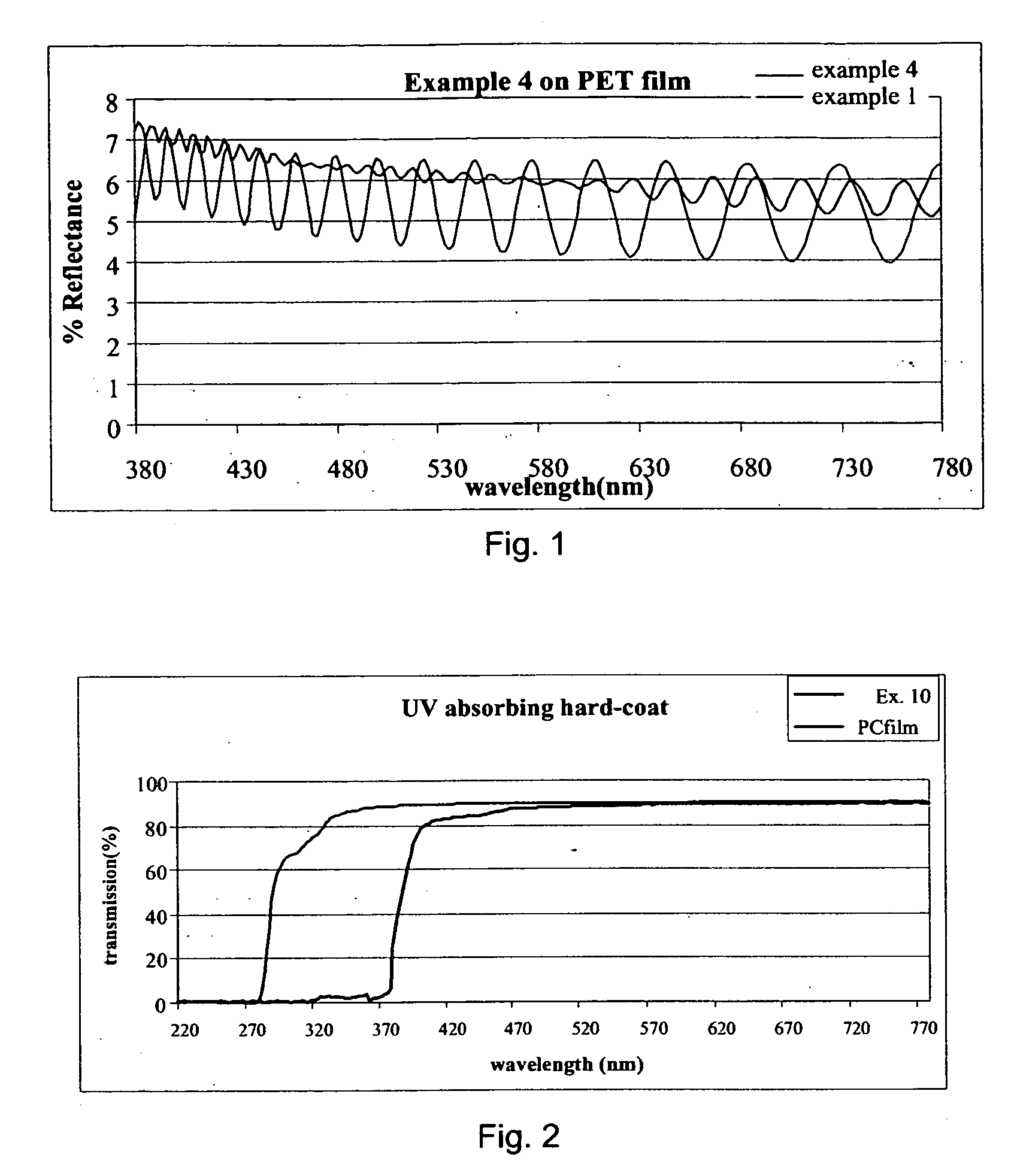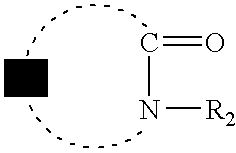Coating compositions
- Summary
- Abstract
- Description
- Claims
- Application Information
AI Technical Summary
Benefits of technology
Problems solved by technology
Method used
Image
Examples
example 1
UV Curable Abrasion Resistant Coating
[0060] Approximately 15.0 grams of acrylic acid were placed into a tared 250 ml beaker, followed by 85.0 grams dipentaearythritol pentaacrylate and 2.50 grams of a suitable photoinitiator. This admixture was stirred for several minutes until a uniform clear solution resulted. Sufficient isopropyl alcohol and 2-methoxypropanol was added to produce an alcohol born coating solution at 30.0 weight percent solids. This coating was then applied to a continuous web of 3-mil adhesion treated Hostaphan® 4507 with a #4 Mayer coating bar, dried with IR radiation and subjected to curing with UV light. The cured coating exhibited high adhesion, low haze and high light transmission. Upon examination of the reflectance spectrum (FIG. 1) it was noted that the difference between the maximum reflectance and minimum reflectance from a peak to the next adjacent valley was about 3.00 percent. The reflected color of this coated PET film under high intensity fluoresc...
example 2
Preparation of UV Curable Abrasion Resistant Coating
[0061] Approximately 1.87 grams vinyl caprolactam was added to a small aluminum-weighing pan. This was followed immediately by 6.70 grams of AMT-130S (pH=8.00) from Nissan Chemical America, which is sold at 30.0 weight percent solids as a methanol sol. To this admixture, 6.22 grams of dipentaearythritol pentaacrylate were added followed by a suitable amount of photoinitiator. This dispersion was then diluted to 30.0 weight percent solids by addition of suitable amounts of methanol and dimethyl formamide. Immediately following preparation of this coating dispersion, samples of PET film were coated, dried and cured with UV radiation. These samples exhibited high abrasion resistance, high optical clarity, and low haze. The remaining coating was then placed into an amber storage bottle for 4-days to test the dispersion stability. Coated film samples prepared after this 4-day period were also abrasion resistant, clear and exhibited go...
example 3
Preparation of UV Curable Abrasion Resistant Coating
[0062] Approximately 1.92 grams vinyl caprolactam was added to a small aluminum-weighing pan. This was followed immediately by 8.33 grams of AMT-130S from Nissan Chemical America, which is sold at 30.0 weight percent solids as a methanol sol. To this admixture, 5.85 grams of dipentaearythritol pentaacrylate were added followed by a suitable amount of photoinitiator. This dispersion was then diluted to 34.0 weight percent solids by addition of suitable amounts of methanol and dimethyl formamide. Immediately following preparation of this coating dispersion, samples of PET film were coated, dried and cured with UV radiation. The reflectance spectrum of the resulting coated film is in FIG. 1. It should be noted that in this case the difference between the peak and valley height was less than 0.40 percent in this case, therein indicating that a better refractive index between the coating and the substrate had been obtained. (See Table...
PUM
| Property | Measurement | Unit |
|---|---|---|
| Fraction | aaaaa | aaaaa |
| Fraction | aaaaa | aaaaa |
| Fraction | aaaaa | aaaaa |
Abstract
Description
Claims
Application Information
 Login to View More
Login to View More - Generate Ideas
- Intellectual Property
- Life Sciences
- Materials
- Tech Scout
- Unparalleled Data Quality
- Higher Quality Content
- 60% Fewer Hallucinations
Browse by: Latest US Patents, China's latest patents, Technical Efficacy Thesaurus, Application Domain, Technology Topic, Popular Technical Reports.
© 2025 PatSnap. All rights reserved.Legal|Privacy policy|Modern Slavery Act Transparency Statement|Sitemap|About US| Contact US: help@patsnap.com


